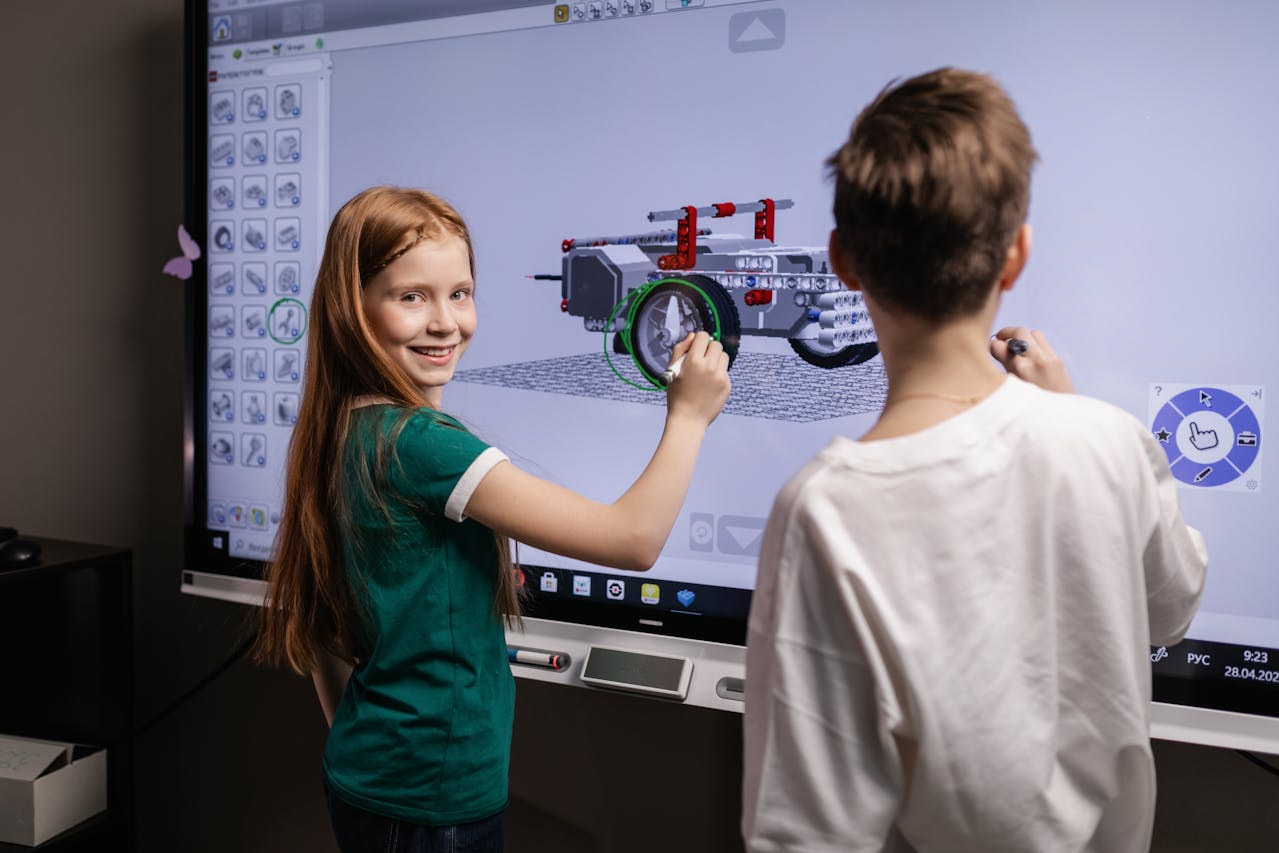The Role of Smartboards in Shaping the Future of STEM Learning

Smartboards are changing the way students learn STEM subjects. These high-tech boards make lessons more fun and easier to understand. They let students touch and move things on the screen, making learning hands-on. This is especially helpful for subjects like math, science, and engineering.
Enhancing Interactive STEM Lessons
Smartboards bring a new level of interaction to STEM lessons. With touchscreens, students can directly engage with the material. For example, they can manipulate 3D models, perform virtual dissections, or plot complex graphs. This hands-on approach makes abstract concepts easier to understand.
Teachers can use smartboards to display dynamic visuals, such as animations and simulations. Instead of just talking about how a volcano erupts, they can show it in real time on the board. This makes the lesson more engaging and helps students grasp the concept quickly. Smartboards also support multimedia content like videos, which can be paused and annotated during lessons.
Interactive quizzes and games on smartboards make learning fun. Teachers can create instant polls or quizzes to check students' understanding. This immediate feedback helps teachers adjust their lessons on the spot. Students remain engaged and motivated, which improves their overall learning experience.
Facilitating Collaborative Learning
Smartboards are great tools for teamwork. They allow multiple students to interact with the board at the same time. This feature promotes group work and collaboration, important skills in STEM fields. Working together on the smartboard, students can brainstorm ideas, solve problems, and complete projects.
Here are some ways smartboards encourage collaboration:
1. Group Projects: Students can collaborate on presentations, diagrams, and models directly on the smartboard.
2. Problem-Solving: They can work together to solve math problems or conduct virtual experiments.
3. Shared Learning: Students can share their solutions with the class, fostering a collaborative learning environment.
Teachers can also use smartboards to facilitate class discussions. They can display a problem or question and invite students to solve it as a group. This encourages participation and helps students learn from each other. It also allows teachers to observe how students think and work together.
Smartboards promote teamwork and help prepare students for real-world STEM careers, where collaboration is often key. These collaborative experiences in the classroom build the skills students will need in their future jobs.
Providing Access to Real-Time Data and Simulations
Smartboards are ideal for showing real-time data and running simulations. In STEM classes, students learn better when they can see data change as they interact. For instance, they can watch how altering variables in a science experiment can change the outcome. This helps them understand cause-and-effect relationships without waiting days for results.
Smartboards allow teachers to connect to live data streams. This is useful for subjects like environmental science, where real-time data such as weather conditions can be monitored. As students see live updates, they can discuss and analyze the data immediately, making learning more dynamic and relevant.
Smartboard simulations show complex processes that are hard to recreate in the classroom. For example, students can run physics simulations to see how different forces interact. Math students can graph equations and see the shapes' form instantly. These visualizations make abstract ideas clear and easier to remember.
Supporting Diverse Learning Styles
Smartboards cater to multiple learning styles, making them a versatile tool for STEM education. They offer features that help visual learners, such as videos, images, and charts. Visual learners can better grasp concepts when they see them displayed graphically, making subjects like geometry and biology more exciting for them.
Kinesthetic learners benefit from the touch and interaction aspects of smartboards. These learners understand better when they can physically engage with the material. For instance, they can drag and drop elements during chemistry lessons or build structures in virtual engineering projects. This hands-on approach keeps them engaged and helps solidify their understanding.
Auditory learners also benefit from smartboards. Teachers can integrate sound and speech into their lessons. Videos and interactive lessons can be paused and discussed, reinforcing key points through listening. This multi-sensory approach ensures that every student has a way to connect with the material.
By accommodating various learning styles, smartboards help make STEM subjects more accessible and enjoyable for all students. This personalized approach improves learning outcomes and makes students more enthusiastic about their studies.
Conclusion
Smartboards are transforming STEM education by making lessons more interactive and engaging. They promote teamwork through collaborative projects and discussions. These boards also provide access to real-time data and simulations, making complex ideas easier to understand. Smartboards support diverse learning styles, ensuring that every student can benefit.
Adopting smartboards in classrooms opens up many possibilities for both teachers and students. They make learning more dynamic and interactive, which can improve student interest and performance in STEM subjects. As technology advances, smartboards will likely play an even bigger role in shaping the future of education.
Explore how IMAGO Technologies can revolutionize your STEM classroom with advanced smartboard solutions. Visit IMAGO Technologies today to learn more.